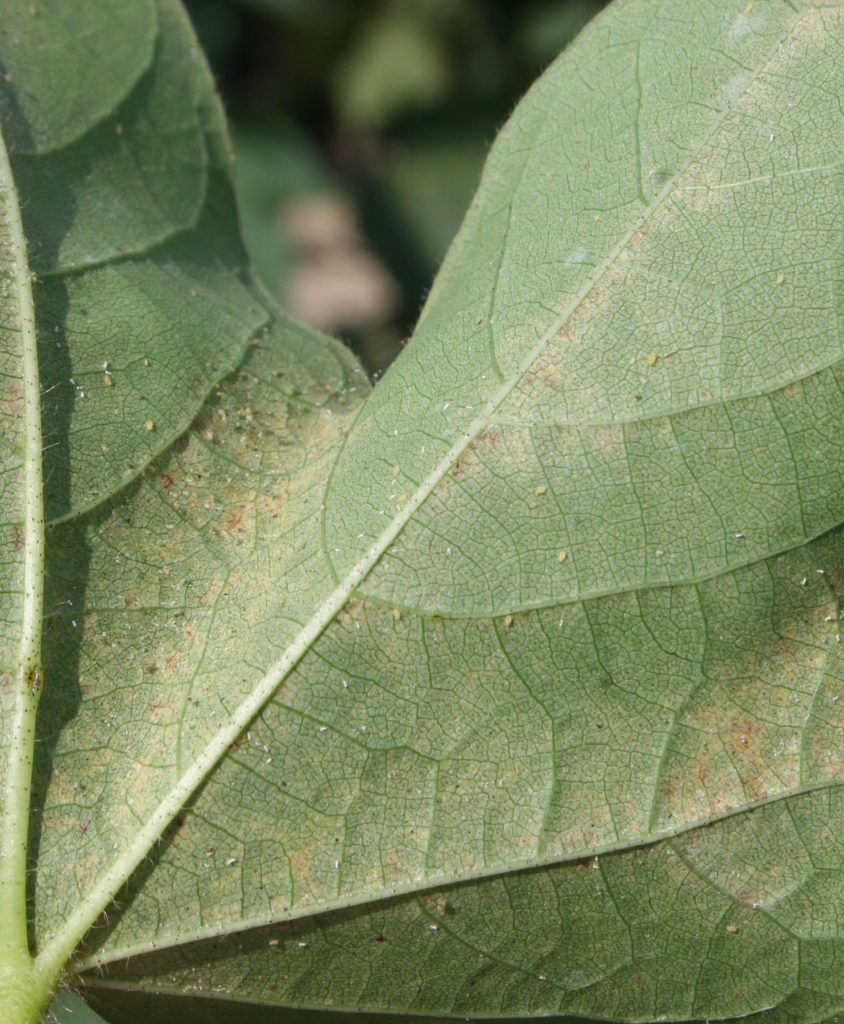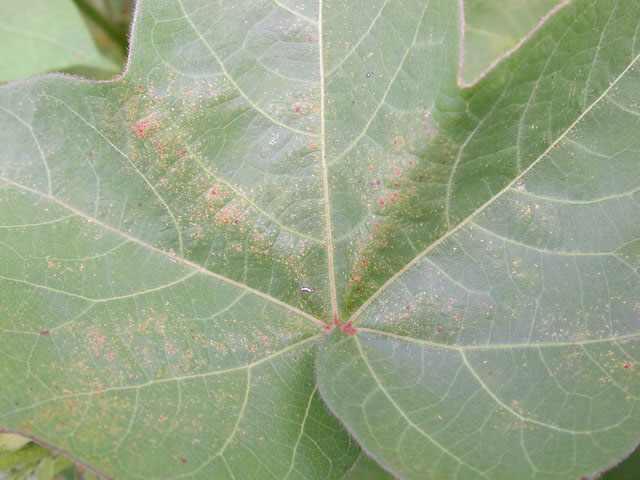Two-Spotted Spider Mite
go.ncsu.edu/readext?646316
en Español / em Português
El inglés es el idioma de control de esta página. En la medida en que haya algún conflicto entre la traducción al inglés y la traducción, el inglés prevalece.
Al hacer clic en el enlace de traducción se activa un servicio de traducción gratuito para convertir la página al español. Al igual que con cualquier traducción por Internet, la conversión no es sensible al contexto y puede que no traduzca el texto en su significado original. NC State Extension no garantiza la exactitud del texto traducido. Por favor, tenga en cuenta que algunas aplicaciones y/o servicios pueden no funcionar como se espera cuando se traducen.
Português
Inglês é o idioma de controle desta página. Na medida que haja algum conflito entre o texto original em Inglês e a tradução, o Inglês prevalece.
Ao clicar no link de tradução, um serviço gratuito de tradução será ativado para converter a página para o Português. Como em qualquer tradução pela internet, a conversão não é sensivel ao contexto e pode não ocorrer a tradução para o significado orginal. O serviço de Extensão da Carolina do Norte (NC State Extension) não garante a exatidão do texto traduzido. Por favor, observe que algumas funções ou serviços podem não funcionar como esperado após a tradução.
English
English is the controlling language of this page. To the extent there is any conflict between the English text and the translation, English controls.
Clicking on the translation link activates a free translation service to convert the page to Spanish. As with any Internet translation, the conversion is not context-sensitive and may not translate the text to its original meaning. NC State Extension does not guarantee the accuracy of the translated text. Please note that some applications and/or services may not function as expected when translated.
Collapse ▲ Mites are not insects, but can be scouted as you would other insects. Mite damage can occur almost any time during the season, but is usually more prevalent during very dry conditions. It first appears as a slight yellowing of the leaves, which later changes to reddish to purplish or bronze color, particularly in the interveinal areas of the leaf. Mite damage can also be recognized by the presence of fine webbing on the underside of the affected leaves. This webbing often traps blown sand grains.
Mites are not insects, but can be scouted as you would other insects. Mite damage can occur almost any time during the season, but is usually more prevalent during very dry conditions. It first appears as a slight yellowing of the leaves, which later changes to reddish to purplish or bronze color, particularly in the interveinal areas of the leaf. Mite damage can also be recognized by the presence of fine webbing on the underside of the affected leaves. This webbing often traps blown sand grains.
 In severe infestations, spider mites can cause widespread defoliation. Spot check for mites while scouting for other pests. Even with obvious yellowing and defoliation, the presence of an active mite population throughout a significant portion of the field should be confirmed before treating. Populations will begin as individual locations in a field and will radiate out from a “hot spot.” A hand lens is very helpful in spotting the small moving adult and nymph stage mites and their very round shiny eggs on the undersides of speckled or bronzed leaves. A fungus that preys upon mites is often present, particularly under rainy or humid conditions, and may greatly reduce mite numbers while the damage symptoms are still present. If significant rainfall is predicted, do not treat but reassess the mite population a few days after the rain. A significant drop in egg levels often indicates a declining mite population.
In severe infestations, spider mites can cause widespread defoliation. Spot check for mites while scouting for other pests. Even with obvious yellowing and defoliation, the presence of an active mite population throughout a significant portion of the field should be confirmed before treating. Populations will begin as individual locations in a field and will radiate out from a “hot spot.” A hand lens is very helpful in spotting the small moving adult and nymph stage mites and their very round shiny eggs on the undersides of speckled or bronzed leaves. A fungus that preys upon mites is often present, particularly under rainy or humid conditions, and may greatly reduce mite numbers while the damage symptoms are still present. If significant rainfall is predicted, do not treat but reassess the mite population a few days after the rain. A significant drop in egg levels often indicates a declining mite population.
Two-Spotted Spider Mite Thresholds
 General leaf discoloration (chlorosis, bronzing, or both), plus live mites over most of the field and defoliation from mites in 25 percent or more of the field. (If rain is imminent, delay treatment and reevaluate 3 to 4 days after the rain. If a miticide is used, 2 applications are sometimes necessary.
General leaf discoloration (chlorosis, bronzing, or both), plus live mites over most of the field and defoliation from mites in 25 percent or more of the field. (If rain is imminent, delay treatment and reevaluate 3 to 4 days after the rain. If a miticide is used, 2 applications are sometimes necessary.


